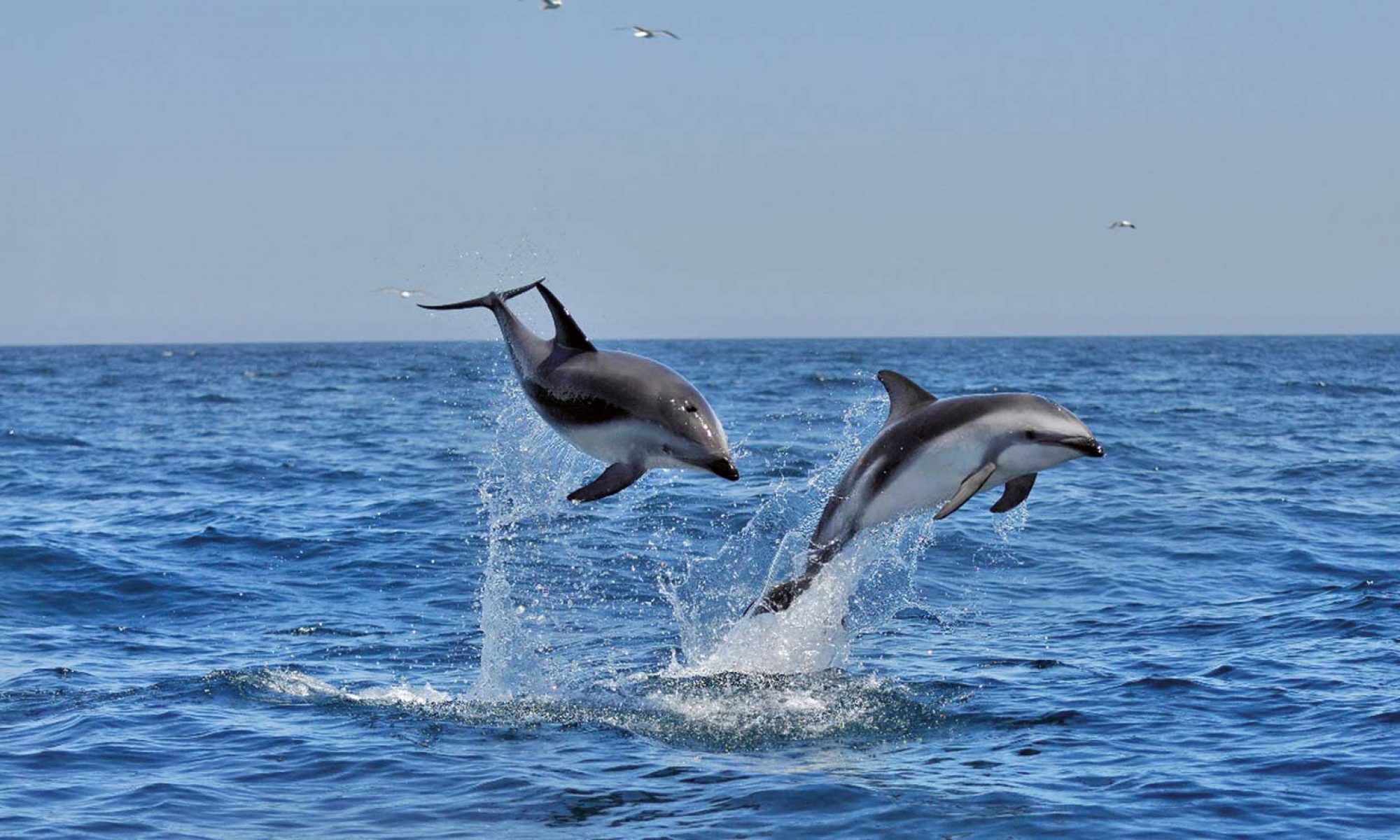Help us with our species conservation projects
Species conservation, as practiced by YAQU PACHA, requires not only the commitment of local people, but also financial support to cover the costs of implementing the projects. This is very cost-intensive, especially in the long term. In Latin America, support for nature conservation from state institutions is rather rare and therefore relies primarily on species conservation organizations such as YAQU PACHA.
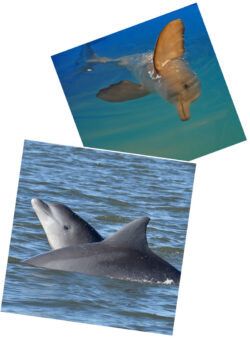
In the following list you will find the regular costs of our species conservation projects. Here you can make your contribution to the protection of endangered species and you know exactly what we do with your donation, because your donation ends up exactly where you want it to. Of course, you will receive a donation receipt and a certificate for your support. In addition, you will always find up-to-date information on the progress of the project you are supporting on our website.
Rehabilitation project for stranded La Plata dolphins
The La Plata dolphin - Franciscana - Toninha is the most endangered dolphin species in South America and its survival is critically endangered. YAQU PACHA has been campaigning for the protection of this dolphin species since 1996. In recent decades, the number of live strandings of La Plata dolphins has increased throughout their range.
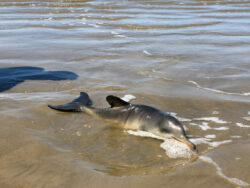
In most cases, these are newborns that require very intensive veterinary care. In order to give these animals a chance, YAQU PACHA has developed scientifically sound strategies in collaboration with other institutions. Our aim is to provide these institutions with the necessary equipment to save these animals.
Here you can find out what it costs to save these dolphins and how you can help us.
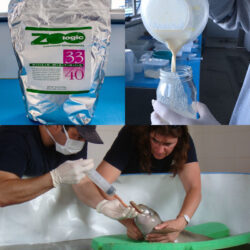
Milk for La Plata dolphin calves
A daily ration of special rearing milk for a La Plata dolphin. This is a special rearing milk for dolphin calves and newborns, which is very high in calories and ensures that the dolphins are sufficiently nourished even in small quantities. As the stomachs of the La Plata dolphin calves are very small, only small amounts of this milk can be fed. The animals are fed at short intervals with this special milk, which we obtain from the USA and have to import to South America.
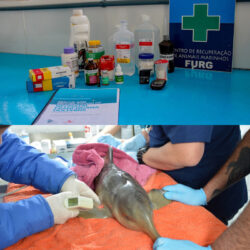
Medication for the treatment of the La Plata dolphins
This corresponds to the weekly cost of medication to treat a rescued La Plata dolphin by specially trained doctors. The regular administration of medication is crucial for the survival of the dolphins.
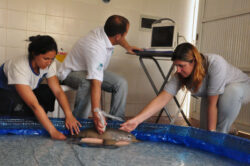
Veterinary care
Continuous veterinary care and treatment is crucial for the survival of the stranded and rescued La Plata dolphins. Any deterioration in their health must be recognized immediately and treated accordingly by specially trained veterinarians.
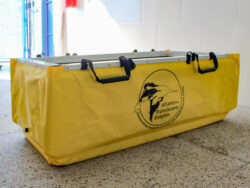
Transport boxes for La Plata dolphins
The stranded and rescued La Plata dolphins can be brought to the rehabilitation center in these special transport boxes, where they are immediately examined and treated depending on their injuries. They are transported in our research vehicles, which we also use to carry out beach checks.
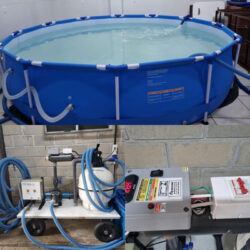
Mobile water basin with filter unit and pump system
These special tanks are urgently needed to care for and look after the rescued La Plata dolphins until they can be released back into a suitable habitat in the sea. The water tanks are equipped with a high-quality filter system and a pump system. This is the only way to achieve optimum water quality for the animals, which is crucial for the survival of the La Plata dolphins. It takes several weeks to months for the animals to recover. The animals must be cared for around the clock until it is ensured that they can lead an independent life and are no longer dependent on human help.
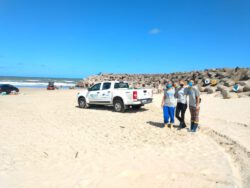
Beach cleaning on the Brazilian coast
Our teams regularly search the beaches on the Brazilian coast for stranded animals. Live animals are immediately brought to our stations in special transport boxes, where they receive immediate medical treatment and care. Dead stranded animals are also recovered to be examined and the cause of death determined.
Project flight count of La Plata dolphins in Uruguay
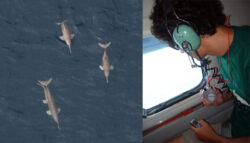
A very important part of the conservation of the La Plata dolphins is the aerial surveys, which are carried out using airplanes with specially curved windows from which the animals are counted.
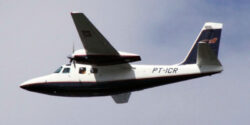
These flight counts were conducted in March and April 2023 along the coast of Uruguay and are crucial for determining the population of the La Plata dolphin in Uruguay.
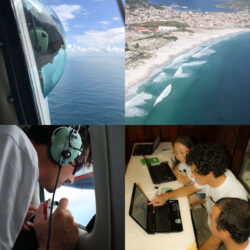
In this way, population declines can be detected immediately, which is of great importance for a better assessment of the species' situation. The results of the flight counts are shared with the partner institutions involved in the project. Regular aerial counts are important in order to identify population fluctuations and develop new strategies to protect this most endangered dolphin species in South America. A sharp decline, as has already been observed in some populations of the La Plata dolphin further north, must be regarded as alarming.
Population size estimate - Lahille's bottlenose dolphin
YAQU PACHA has been supporting species conservation projects to save the Lahille's bottlenose dolphin for more than 20 years. The range of this species is limited to the coastal waters of southern Brazil, Uruguay and Argentina. Populations are small and fragmented and face a number of serious threats, including heavy pollution, which increasingly leads to skin diseases, and bycatch in some areas. Recent data suggests that the species is threatened with extinction in many areas. The total population is estimated to be no more than 600 animals.
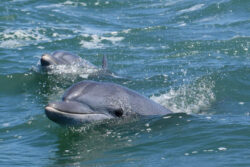
YAQU PACHA's dolphin projects aim to monitor the various populations over a period of years in order to assess their condition and identify any alarming changes.
To achieve this goal, regular monitoring trips with our research boat and aerial surveys for population control and photo identification of the dolphins are necessary. But regular beach checks with vehicles are also necessary to determine the cause of death of stranded dolphins.
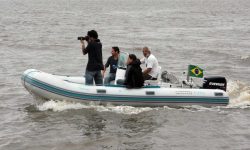
Observation and photo-identification of Lahille's bottlenose dolphins in the Lagoa dos Patos in Brazil with our research boat Charlotte. These trips take place regularly and are very important for the assessment of the population in the Lagoa dos Patos. The photo-ID method is based on the distinguishing feature of the dolphins' dorsal fin, as this is different for each animal. This allows individual animals to be identified and the total population to be estimated. With the help of a database, the animals can be recognized and sightings registered.
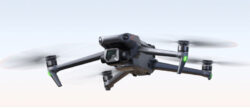
DJI Mavic 3 Classic drone - New DJI Mavic 3 Classic research drone for photo shoots and flight counts
This modern drone system is equipped with a high-resolution Hasselblad camera and delivers razor-sharp images of the animals. It is used by our team to monitor behavior and, in some cases, fishing activities in the research area. The drone can be launched and landed from the research boat. High-resolution video recordings of the animals are also possible.
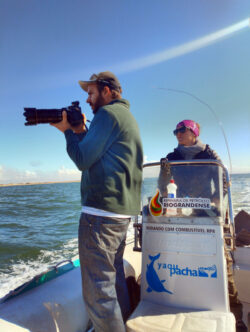
New camera
Camera systems are essential for any research project. In our projects, these camera systems are mainly used to obtain accurate images for photo-identification, but also to monitor the development of skin lesions over time. The dolphins are photographed and their dorsal fin/skin region is registered in the database and compared with existing images of the animals.
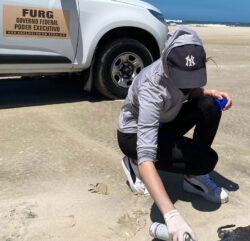
Catering for our volunteers
We regularly look for and need volunteers to strengthen our teams in South America. They already have specialist knowledge and appropriate training and are important for the work in our species conservation projects. YAQU PACHA's aim is to employ these specialists in our projects on a long-term basis.
Project La Plata dolphin | Project bottlenose dolphin Brazil | Flight counts - Aerial Surveys - Uruguay | Species protection | Animal welfare | 30 years of YAQU PACHA e.V. | Support us | Articles for sale | Tasks and goals | La Plata dolphin
